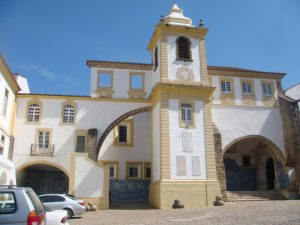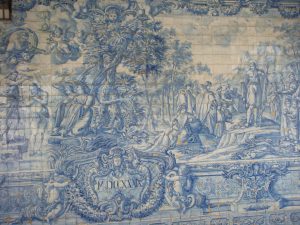
Portalegre as origens da cidade
Quando a formação do reino de Portugal, no século XII, é provável que existisse no vale que separa a Penha de S. Tomé (Serra da Penha), do Cabeço do mouro, algumas casas que forneciam refúgio e mantimentos aos que por estas passagens viajassem. Neste Local de passagem (porto), situado numa região verdejante e aprazível (alegre), o casario foi aumentando, constituindo a cidade de Porto Alegre, que com o decorrer do tempo passou-se a designar Portalegre.
Os documentos históricos demonstram que em 1229 Portalegre era vila do concelho de Marvão e que em 1253 já era sede do concelho.
 O 1º foral foi-lhe atribuído por D. Afonso III em 1259. Este monarca mandou edificar uma fortaleza que, contudo, ficou incompleta. Em 1271 D. Afonso III doou ao seu segundo filho, o infante D. Afonso, as vilas de Portalegre e Marvão e os senhorios de Vide e Arronches.
O 1º foral foi-lhe atribuído por D. Afonso III em 1259. Este monarca mandou edificar uma fortaleza que, contudo, ficou incompleta. Em 1271 D. Afonso III doou ao seu segundo filho, o infante D. Afonso, as vilas de Portalegre e Marvão e os senhorios de Vide e Arronches.
Quando faleceu D. Afonso III, em 1279, o infante D. Afonso pretendeu suceder-lhe no trono, alegando que D. Dinis era filho ilegítimo. Esta pretensão não foi tomada a sério mas deu origem a desavenças entre os irmãos.
Portalegre esteve envolvida nesta querela e, em 1299, foi cercada por D. Dinis. O cerco durou cinco meses, e depois D. Afonso rendeu-se. É importante referir que D. Dinis cercou as muralhas que ele próprio mandara edificar em 1290. Na realidade, neste ano, o rei remodelou a alcáçova e a torre de menagem e construiu uma segunda cerca de que ainda hoje existem bastantes troços.
A torre ou atalaia que domina a cidade, conhecida pelo nome de “Atalaião” admite-se que seja um pouco anterior à fortificação de D. Afonso III.
Em 1299 D. Dinis deu a Portalegre o privilegio de não ser concedido o senhorio da vila “nem a infante, nem a homem rico, nem a rica-dona, mas ser d’ el-Rei e de seu filho primeiro herdeiro”.
 Quando em 1383 morreu o rei D. Fernando, ficou regente D. Leonor devendo suceder-lhe sua filha e, consequentemente, D. João I de Castela, o marido, facto que traíra a perda da independência.
Quando em 1383 morreu o rei D. Fernando, ficou regente D. Leonor devendo suceder-lhe sua filha e, consequentemente, D. João I de Castela, o marido, facto que traíra a perda da independência.
Estes acontecimentos provocaram a divisão da nobreza portuguesa: a maior parte tomou partido de D. Leonor, enquanto outros seguiram o Mestre de Aviz, nomeadamente Nuno Álvares. Nesta altura era alcaide de Portalegre, D. Pedro Álvares Pereira, Prior do Crato, irmão de Nuno Álvares e ferrenho partidário de D. Leonor, vivia também na vila, numa casa do “corro”, a mãe dos Álvares Pereira, Fria Gonçalves. Em face das posições assumidas pelo alcaide, o povo de Portalegre revoltou-se, cercou o castelo, tendo em consequência, fugido D. Pedro para o Crato.
O ex-alcaide viria a morrer em 1395, na batalha da Aljubarrota, quando combatia ao lado de Castela.
Entretanto, a vila foi adquirindo muito importância e, em 1549, diligências do rei D. João III permitiram que o papa Paulo III expedisse a bula que criava a nova diocese de Portalegre (até então a vila esteve integrada na diocese da Guarda). Em 1550, D. João III escreveu a carta régia que levou Portalegre à categoria de cidade.
Este beneficio não foi fortuito, basta referir que, nesta época, Portalegre era, juntamente com Estremoz e Covilhã, um dos principais centros da indústria de tecidos do país e que o imposto sobre as judiarias era ao do Porto e só ultrapassado por Lisboa, Santarém e Setúbal.
(texto da autoria do Prof. Doutor António Ventura)